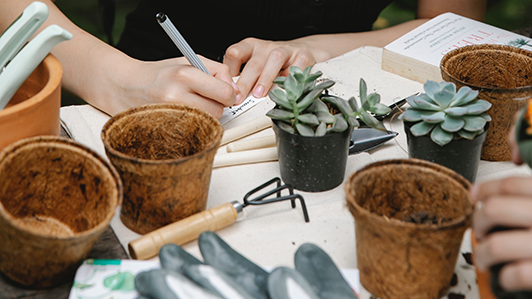
K-State horticulture expert Ward Upham said it takes approximately eight weeks to grow from seed to transplant size.
K-State horticulture expert suggests planting calendar to organize seed transplants
Vegetable seeds should get started in early February
Feb. 10, 2023
By Maddy Rohr, K-State Research and Extension news service
MANHATTAN, Kan. — Starting vegetable seeds indoors to prepare for a spring garden is common, but to get it right, Kansas State University horticulture expert Ward Upham recommends using a planting calendar.
“To do this, choose your transplant date and count back the number of weeks necessary to grow your own transplants,” Upham said. “For example, cabbage, broccoli, and cauliflower are usually transplanted in late March to early April.”
Upham said it takes approximately eight weeks to grow from seed to transplant size.
Below are plants and how many weeks from seed start to transplant is recommended:
- Ageratum - 8
- Alyssum - 8
- Aster - 6
- Balsam - 6
- Begonia – 12 or more
- Broccoli - 8
- Browallia – 12 or more
- Cabbage - 8
- Cauliflower - 8
- Celosia - 8
- Centuria - 6
- Coleus - 8
- Cosmos – 4 or less
- Cucumber – 4 or less
- Dahlia - 8
- Dianthus - 10
- Eggplant - 8
- Geranium – 12 or more
- Impatiens - 10
- Larkspur – 12 or more
- Lettuce - 8
- Marigold - 6
- Muskmelon – 4 or less
- Nicotiana - 8
- Pansy – 12 or more
- Pepper - 8
- Petunia - 10
- Phlox - 8
- Portulaca - 10
- Snapdragon - 10
- Squash – 4 or less
- Stock - 10
- Tomato - 6
- Verbena - 10
- Vinca – 12 or more
- Watermelon – 4 or less
“The dates are not set in stone, and a week earlier or later will not ruin the plants,” Upham said.
“Also, you may want to seed a week or two earlier if you are in southern Kansas and possibly a week later if you are in northern Kansas.”
Upham recommends reusing calendars every year, with a slight reset of the dates. Keep notes on how well the transplants did so you can tweak the planting schedule.
“Your conditions may result in plants that need a bit more or a bit less time,” Upham said.
Upham and his colleagues in K-State's Department of Horticulture and Natural Resources produce a weekly Horticulture Newsletter with tips for maintaining home landscapes and gardens. The newsletter is available to view online or can be delivered by email each week.
Interested persons can also send their garden and yard-related questions to Upham at wupham@ksu.edu, or contact your local K-State Research and Extension office.

